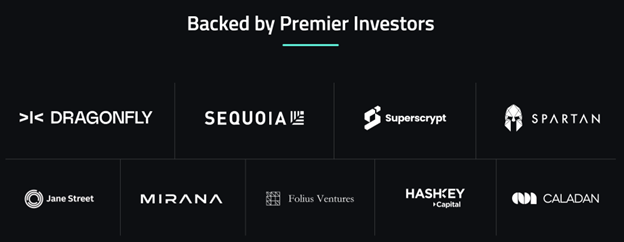 |
| By Jurica Dujmovic |
It takes a lot of work to stay up to date in the world of crypto.
Thanks to the decentralized nature of the market, there is no single source of information.
No Wall Street Journal just for crypto.
No Bloomberg Terminal to reveal each minute move in the market.
Instead, asset prices can vary slightly from exchange to exchange. And most projects share their news on social media or in individual Discord servers.
But one project hopes to change that reality. Kaito AI (KAITO, “D+”) has burst onto the scene with an ambitious goal: To become the "Bloomberg and Google of web3."
Crypto’s Information Bottleneck
Kaito AI’s origin story will sound familiar to anyone who's tried to make sense of crypto's information firehose.
Yu Hu, a former Citadel equities trader, found himself moonlighting as a crypto investor in 2021. And he quickly identified a critical problem …
While traditional finance has the Bloomberg Terminal to aggregate market intelligence, crypto's is scattered across various platforms.
To get the full picture of the crypto market at any time, one has to navigate a chaotic mess of Telegram leaks, Twitter threads and buried DAO proposals — all without a unified discovery layer.
By late 2022, Hu had teamed up with Yunzhong He, a former Meta machine-learning lead, to change this reality.
Together, they created Kaito — an AI-powered vertical search engine that lets traders instantly sift through podcasts, governance votes and on-chain events.
Their early demos were compelling enough to secure a $5.3 million seed round led by Dragonfly, with Sequoia China and Jane Street.

The problem Kaito aims to solve is substantial.
There are thousands of tokens that trade 24/7 globally, millions of crypto-related tweets monthly and thousands of Discord channels generating constant chatter.
While generative AI has made creating content cheaper than ever, finding relevant information has become the ultimate bottleneck for crypto traders.
Kaito brilliantly reframes this as an "attention economy" where signal — not just blockspace — is the scarce resource worth capturing.
The Product: AI-Powered Insight Discovery
Imagine you're a fund analyst. You’ve recently heard rumors that LayerZero (ZRO, “D+”) will enable OFAC-compliant relayers.
This is quite a specific example, but bear with me.
To get the full scope of what’s going on in the past, you would have had to check every LayerZero social media account, dive into the protocol to review the results of recent votes and monitor price action.
That could take hours to sort through. And that’s just one development in one project.
But with Kaito, things get much easier. Simply open Kaito Pro, type "$ZRO compliance," and within seconds you’ll be presented with the actual DAO proposal text, snippets from developer calls (auto-transcribed) and a sentiment chart showing market reaction.
The platform's built-in AI might even suggest a pairs trade (short $ZRO/long $ARB) and push it to your Slack.
According to Kaito, this workflow "compresses a two-hour research loop into five minutes and quantifies mindshare so we can size positions."
This efficiency doesn't come cheap, mind you. The Pro tier runs $750 per month per seat when billed biennially!
But with over 200,000 monthly active users reported, people seem willing to pay.

Not Just Another ChatGPT Wrapper
What separates Kaito from the increasingly crowded AI landscape is how it indexes and analyzes crypto information.
Unlike generic AI chatbots that struggle with crypto jargon, the platform uses AI/LLM techniques to index a massive amount of unstructured crypto data.
Behind the scenes, Kaito processes terabytes of unstructured information from various sources including X.com (formerly Twitter), Discord, Telegram, governance forums, blogs, podcast transcripts and on-chain data.
The secret sauce?
The platform then applies AI ranking, topic mining, sentiment analysis and personalization to this noise to clean it up and make it readable.
Competitive Landscape: Finding the Edge
That’s not to say there aren’t other crypto data aggregators already in the market. Projects like Nansen, Arkham and LunarCrush each look to give broad market perspective to users.
But none of them offer the complete picture that Kaito does.
Where Nansen focuses only on on-chain metrics and LunarCrush analyzes only social media sentiment, Kaito does it all.
In an industry where information asymmetry is often the only edge, Kaito is betting that its all-encompassing approach will make it the default dashboard for serious traders.
Whether they're right depends on execution, but the vision is undeniably compelling.
The Token Economy: Yap-to-Earn
In true decentralized web3 fashion, Kaito AI also offers a way for users to earn from its platform.
Its "Yap-to-Earn" program rewards analysts who contribute insights to the platform. This approach allows Kaito to crowdsource high-quality content and build a community of contributors.

The KAITO token launched in late February 2025 with a total supply of 1 billion tokens. That serves as the core utility token of the platform, used for governance (token holders can propose/vote on ecosystem changes) and for incentive alignment (rewarding participation and "attention" in the network).
At its heart, the token underpins what Kaito calls the "Information Finance (InfoFi)" economy, where user contributions through programs like Yaps are tokenized and rewarded.
Red Flags and Open Questions
It's not all moonshots in the InfoFi waters.
Despite Kaito's impressive traction, its token distribution remains a legitimate concern.
While 56.67% of KAITO tokens have been allocated to Community & Ecosystem programs (including 19.5% for airdrops and incentives), insiders control a substantial 43.3% chunk.
Despite standard vesting schedules and initial on-chain data showing accumulation postlaunch, crypto analysts warn that this concentration could spell trouble.
In fact, that level of centralization is typically a red flag in any new crypto project.
That’s because the potential for synchronized selling during unlock events is pretty high. And that could flood markets and trigger sharp price declines.
That, in turn, often creates a psychological overhang that could spook retail investors at the first whiff of insider selling.
Meanwhile, Kaito faces the classic innovator's dilemma on the competitive front.
It currently enjoys first-mover advantage, with its comprehensive approach to data indexing. But the crypto analytics landscape is rapidly evolving. Competitors who currently focus on narrower niches could expand their offerings.
In crypto's hyper-competitive ecosystem, yesterday's innovation is tomorrow's baseline expectation.
Kaito's continued success hinges not just on maintaining its technological edge. But on aggressively expanding its data moat and analytical capabilities while competitors are still playing catch-up.
Still, with over 200,000 monthly active users, $10.8 million in funding and a growing ecosystem of features like the Yapper Leaderboard, Kaito real-world traction is too impressive to ignore.
For those navigating the complex world of crypto information, Kaito represents an attempt to bring order to chaos.
And in an industry that rewards those who solve real problems with real technology, that's exactly the kind of bet that tends to pay off.
Kaito AI may be in its early days. But it’s a project I’ll be watching closely.
And an investment opportunity that’ll be on my radar going forward.
Best,
Jurica Dujmovic
P.S. Did you know you can take the Weiss Ratings wherever you go?
You can click on the play button at the top of any article to listen while you read or do other things.
And did you know that we have a Weiss Ratings app?
It's available now in the Google Play store and coming soon in the Apple App store. Use it to set up smartphone notifications, read and listen to articles and research your favorite stocks from just about anywhere in the world.

